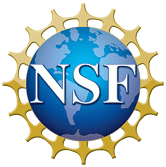
By Melissa Ballard - January 2016
PAPER CITATION
Laursen, S. L., Thiry, H., Archie, T., & Crane, R. (2013). Variations on a theme: Characteristics of out-of-school time science programs offered by distinct organization types. Afterschool Matters, 17, 36–49.
To date, no national studies of science-focused out-of-school time (OST) programs have been implemented, making it difficult to get a sense of program diversity and characteristics. In this paper, Laursen, Thiry, Archie, and Crane map the national landscape of U.S. out-of-school time (OST) science, technology, and engineering programs. In addition to characterizing programs by organization type, they ask program-specific questions such as populations targeted by the program, number of participants, and number of contact hours.
Other attempts to map OST science, technology, engineering and math (STEM) programming have focused on specific sectors, such as youth programs in science centers and museums or programs under a specific federally funded portfolio. This study is the first to attempt a comprehensive mapping on a larger scale. The findings allow the authors to describe a generalized profile for each of eight types of OST program providers.
Research Design
Laursen and colleagues investigated the following research questions:
- What features describe the landscape of U.S. science-focused OST programming?
- How do programs vary by activities, populations served, duration and frequency, desired outcomes, and other key factors?
- What patterns in these variables help to characterize current program offerings and define areas of future opportunity?
The authors developed an online questionnaire, which they disseminated broadly to the OST field. To narrow the focus of the study, they set program criteria, requiring that programs focus on science, engineering, or math; that they serve youth in sixth grade or higher; that they have been in existence for at least a year; and that programs engage youth with other peers or the public through multiple sessions. In total, 712 programs completed the survey, and 417 met the required criteria.
Research Findings
The authors identified eight primary organization types that hosted the OST programs. The largest group was universities or colleges, which represented 26 percent of the sample, and nonprofit organizations, at 25 percent. The remaining provider types included museums or science centers (15 percent); K–12 school districts (12 percent); national youth organizations (8 percent); aquariums, zoos, or planetariums (8 percent); private sector organizations (3 percent); and government labs (2 percent).
The paper describes findings related to several program characteristics. Highlights include:
- Higher proportions of national youth organizations, nonprofits, and university and college OST programs targeted girls.
- Private sector programs and school districts targeted gifted and talented youth at higher rates.
- Underrepresented minorities were targeted in relatively equal rates across all organization types.
- Across all types of programs, 15 percent explicitly targeted youth with disabilities.
The financial accessibility of programs varied greatly across organization types. Only 9 percent of aquarium, zoo, or planetarium OST programs required youth to pay. In comparison, 67 percent of national youth organizations required youth to pay; however, 85 percent of these organizations offered scholarships. Youth stipends were most common in universities and colleges, government labs, and museums and science centers.
Ninety-nine percent of all survey respondents reported that their program had at least one staff member with an education background and one staff member with a scientific or technical background.
The authors conclude that this study defines some of the characteristics of different kinds of OST providers and highlights areas for mutually beneficial partnerships. For example, nonprofit organizations, which frequently targeted girls and underrepresented minorities, had participation numbers that matched their goals. A moderate proportion of private sector OST providers and school districts likewise named specific target audiences; however, their actual program participation was much less diverse than that reported by other organization types.
In further analyses, Laursen and colleagues note that they will explore the relationships between organization types and program characteristics, combining this with findings from in-depth interviews with OST science leaders to better understand why organizations exhibit specific characteristics (Thiry, et al., 2015).
Implications for Practice
Across all organization types, OST science programs have a clear opportunity to focus on serving youth with disabilities. Although most programs likely have youth with disabilities attending, we don’t know how well they support this population. A stated focus on these youth may imply that an organization has adopted policies, trained staff, and designed programming specifically to meet the needs of youth with disabilities.
References
Thiry, H., Archie, T., Arreola Peña, M., & Laursen, S. L. (2015, in press). Linkages between youth diversity and organizational and program characteristics of out-of-school-time science programs: A mixed-methods study. International Journal of Science Education Part B: Communication and Public Engagement. doi 10.1080/21548455.2015.1105397




